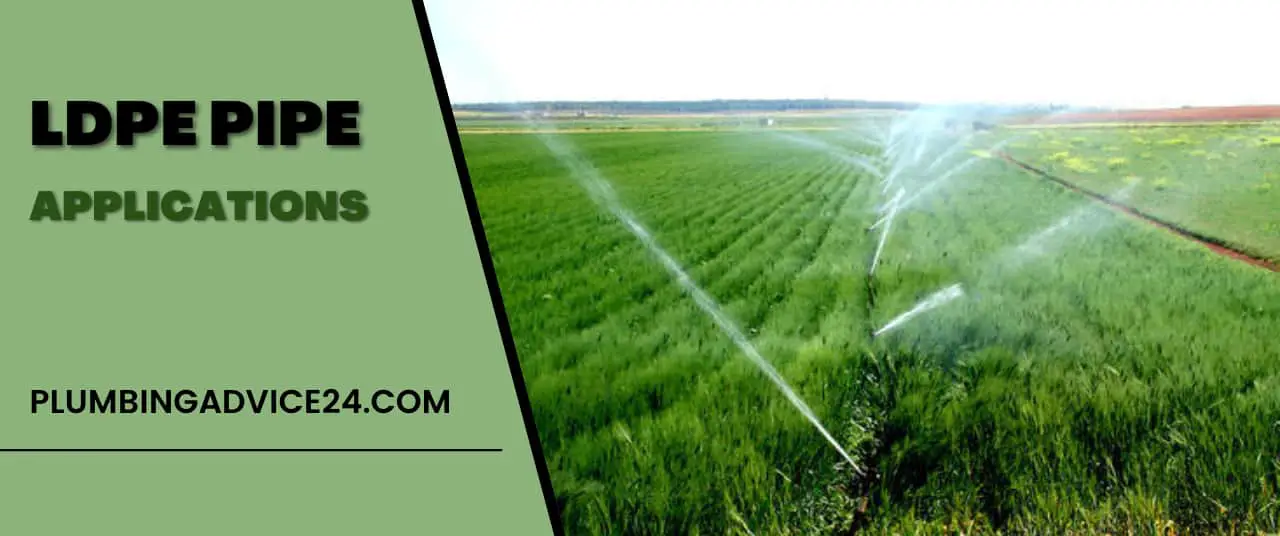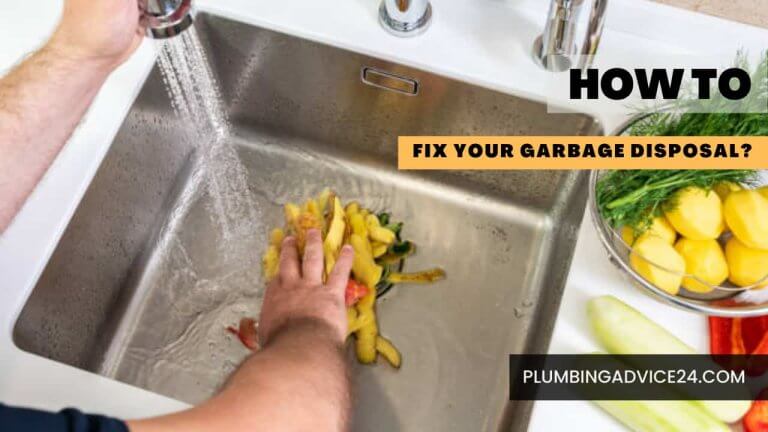Everything About LDPE Pipe | LDPE Irrigation Pipe
Low-density polyethylene (LDPE) pipe is an ideal piping material for water distribution lines in low-pressure applications. LDPE has less crystallinity than HDPE pipe due to differences in their molecular structure. This polyethylene was first used as a product in 1955. LDPE pipes are manufactured today using a high-pressure process (1600 atm and 200°C in reactor tubes) made by free radical polymerization under the same manufacturing conditions. So let’s know more about LDPE pipes.
What Is LDPE Pipe?
LDPE pipe is a type of plastic pipe that is flexible and durable. LDPE pipe stands for low-density polyethylene pipe. It is a flexible and non-toxic form of pipe, resistant to corrosion and chemicals.
Polyethylene was first used as a product in 1955; LDPE (Low-Density Polyethylene) is a thermoplastic pipe for petroleum. LDPE pipes are made today at similar production conditions using a high-pressure process (1600 atm and 200 °C in a reactor tube) made by free radical polymerization.
LDPE water pipes are designed for carrying potable water and are available in normal gauge and heavy gauge. This polyethylene pipe is resilient and heat insulating, facilitating laying and installation and reducing the risk of frost damage.
LDPE pipe has been widely used in the water industry and agriculture for many years. It is generally used for low-pressure applications and is supplied in black.
Must Read : What Is Plumbing Pipe | 22 Different Types of Plumbing pipes
LDPE Pipe Manufacturing Process
LDPE Pipes are manufactured according to TS 418-2 EN 12201 standards. The pe40-grade raw material is used in the production of low-density polyethylene pipes. The raw material of LDPE is in pellet form.
- Injection Molding:
This rapid process converts LDPE pellets or granules into custom shapes and sizes defined by molds. Thermoplastic pellets are sent to a heated barrel, from which the material is melted by a screw barrel and a heater band.
The molten plastic is then injected into the pre-configured mold cavity, which also cools the material. After solidification, the plastic material is ejected from the molding machine.
- Production:
The production process is also similar to the injection molding process. Heat is also used to melt the plastic granules. The difference comes in the final section of the machine – in this case, the molten plastic is passed through pre-designed openings and then cooled to solidify.
- Blow Molding:
This type of process is commonly used to make hollow-shaped plastic objects. Instead of injecting molten plastic, the process uses compressed air to blow the material into the mold.
Must Read : What Is Polyethylene Pipe | PE Pipe Manufacturing Process | PE Pipe Uses | PE Pipe Sizes | PE Pipe Cost
LDPE Pipe Lifespan
LDPE Pipe is durable and has a good lifespan. It is resistant to corrosion as well as most chemicals and high temperatures, making the system more effective in delivering water efficiently. LDPE tubes have a lifespan of 50 years but can last 100 years or more if properly installed.
LDPE Pipe Application
Low-density polyethylene has high compressive strength, transparency and flexibility, and high expansion properties. LDPE pipe is used to transport water from a water source to a building and can be found in homes and buildings worldwide.
Applications of LDPE pipe are as follows:
- Transporting Cold Water in Residential and Commercial Applications
- Oil and Gas Industry
- Sewer and Slurry Lines
- Wastewater Treatment Plants
- Water Transport Station
- Water Purification Treatment
- Chemical Industry
- Storage Tanks
- Food and Beverage Applications
- Pharmaceutical Industry
- Mining Industries
- Agricultural Industries
- Irrigation System
Must Read : What Is HDPE Pipe | HDPE Pipe Manufacturing Process | HDPE Pipe Uses | HDPE Pipe Sizes | HDPE Pipe Cost
How to Measure LDPE Pipe?
Measuring the diameter of a plastic pipe may seem straightforward at first – you simply measure the diameter of the pipe. However, it’s important that you measure the correct diameter with the correct unit, so you can tell exactly what size it is, and make sure that when you’re refitting a fitting or more pipe, you choose the correct size.
LDPE pipes are also OD based. SDR stands for “Standard Dimension Ratio” in LDPE pipes and is used to rate pressure piping. It’s an inverse relationship, though. The higher the SDR, the lower the pressure rating. The SDR indicates how much pressure (in PSI) the LDPE pipe can withstand.
Determining the SDR of a PE pipe is quite simple. The formula is SDR = D/s, where ‘D’ is the outside diameter of the pipe (in millimeters or inches), and ‘s’ is the wall thickness of the pipe (in millimeters or inches). As the SDR decreases, the wall thickness increases. The tensile strength of a pipe increases as its thickness increases, which is the pipe’s ability to withstand pressure.
Measure the Outside Diameter (OD) of your LDPE pipe or pipe fitting:
- Wrap a string around the pipe.
- Mark the point where the string touches together.
- Use a ruler or measuring tape to find the length between the tip of the string and the mark you made (circumference).
- Divide the circumference by 3.14159.
Note: You may also have heard the term “DR,” which stands for “dimension ratio.” When the dimension ratio of a pipe is one of the following, it is considered standard, which is recognized internationally. Standard aspect ratios fall within the ANSI preferred number range and include 9, 11, 13.5, 17, 21, 26, and 32.5. All SDRs are DR, but not all Drs are SDRs.
LDPE Pipe Sizes
Low-density polyethylene (LDPE) tubing comes in diameters from 1/8″ to 3/4″ inside. It is available in rolled coils of various lengths or in straight lengths and in natural (translucent) or black color. LDPE pipe has excellent chemical and temperature resistance for food/beverage and chemical transfer.
LDPE Pipe Dimensions Are as follows:
| DN
mm |
Toleranslar (*)* Tolerances | PN 10 | PN 6 | PN 4 | ||||||||
| A* | B* | o* | S | S* | Weight mt/kg | S | S* | Weight mt/kg | S | S* | Weight mt/kg | |
| 16 | 0.3 | 0.3 | 1.2 | 2.3 | 0.4 | 0.091 | – | – | – | – | – | – |
| 20 | 0.3 | 0.3 | 1.2 | 3.0 | 0.4 | 0.147 | 2 | 0.3 | 0.104 | – | – | – |
| 25 | 0.3 | 0.3 | 1.2 | 3.5 | 0.5 | 0.217 | 2.3 | 0.4 | 0.151 | – | – | – |
| 32 | 0.3 | 0.3 | 1.3 | 4.4 | 0.6 | 0.351 | 3 | 0.4 | 0.251 | 2 | 0.3 | 0.173 |
| 40 | 0.4 | 0.4 | 1.4 | 5.5 | 0.7 | 0.548 | 3.7 | 0.5 | 0.388 | 2.4 | 0.4 | 0.261 |
| 50 | 0.5 | 0.4 | 1.4 | 6.9 | 0.8 | 0.86 | 4.6 | 0.6 | 0.604 | 3 | 0.4 | 0.408 |
| 63 | 0.6 | 0.4 | 1.5 | 8.6 | 1 | 1.352 | 5.8 | 0.7 | 0.959 | 3.8 | 0.5 | 0.65 |
| 75 | 0.7 | 0.5 | 1.6 | 10.3 | 1.2 | 1.923 | 6.8 | 0.8 | 1.34 | 4.5 | 0.6 | 0.917 |
| 90 | 0.9 | 0.6 | 1.8 | 12.3 | 1.4 | 2.762 | 8.2 | 1 | 1.939 | 5.4 | 0.7 | 1.32 |
| 110 | 1 | 0.6 | 2.2 | 15.1 | 1.7 | 4.142 | 10 | 1.1 | 2.89 | 6.6 | 0.8 | 1.972 |
| 125 | 1.2 | 0.6 | 2.5 | 17.1 | 1.9 | 5.333 | 11.4 | 1.3 | 3.743 | 7.4 | 0.9 | 2.515 |
| 140 | 1.3 | 0.9 | 2.8 | 19.2 | 2.1 | 6.703 | 12.7 | 1.4 | 4.673 | 8.3 | 1 | 3.159 |
| 160 | 1.5 | 1 | 3.2 | 21.9 | 2.3 | 8.741 | 14.6 | 1.6 | 6.135 | 9.5 | 1.1 | 4.132 |
| 180 | 1.7 | 1.1 | 3.6 | 24.6 | 2.6 | 11.05 | 16.4 | 1.8 | 7.754 | 10.7 | 1.2 | 5.236 |
| 200 | 1.8 | 1.2 | 4.0 | 27.4 | 2.9 | 13.67 | 18.2 | 2 | 9.563 | 11.9 | 1.3 | 6.469 |
| 225 | 2.1 | 1.4 | 4.5 | 30.8 | 3.2 | 17.29 | 20.5 | 2.2 | 12.12 | 13.4 | 1.5 | 8.195 |
| 250 | 2.3 | 1.5 | 5 | 34.2 | 3.6 | 21.33 | 22.7 | 2.4 | 14.91 | 14.8 | 1.6 | 10.06 |
| 280 | 2.6 | 1.7 | 9.8 | 38.2 | 4 | 26.75 | 25.4 | 2.7 | 18.69 | 16.6 | 1.8 | 12.64 |
| 315 | 2.9 | 1.9 | 11.1 | 43.1 | 4.5 | 33.87 | 28.6 | 3 | 23.67 | 18.7 | 2 | 16.01 |
| 355 | 3.2 | 2.2 | 12.5 | 48.5 | 5 | 42.96 | 32.2 | 3.4 | 30.04 | 21.1 | 2.3 | 20.36 |
| 400 | 3.6 | 2.4 | 14 | 54.7 | 5.6 | 54.59 | 36.3 | 3.8 | 38.16 | 23.7 | 2.5 | 25.78 |
| 450 | 4.1 | 2.7 | 15.6 | 61.5 | 6.3 | 69.05 | 40.9 | 4.2 | 48.36 | 26.7 | 2.8 | 32.67 |
| 500 | 4.5 | 3.0 | 17.5 | – | – | – | 45.4 | 4.7 | 59.65 | 29.7 | 3.1 | 40.37 |
| 560 | 5.0 | 3.4 | 19.6 | – | – | – | 50.8 | 5.2 | 74.76 | 33.2 | 3.5 | 50.55 |
| 630 | 5.7 | 3.8 | 22.1 | – | – | – | 57.2 | 5.9 | 94.69 | 37.4 | 3.9 | 64.06 |
| 710 | 6.4 | 4.0 | 24.9 | – | – | – | 64.5 | 6.6 | 120.33 | 42.1 | 4.4 | 81.27 |
| 800 | 7.2 | 4.0 | 28.0 | – | – | – | 72.6 | 7.4 | 152.63 | 47.4 | 4.9 | 103.1 |
| 900 | 8.1 | 4.0 | 31.5 | – | – | – | 81.7 | 8.3 | 193.22 | 53.3 | 5.5 | 130.43 |
| 1000 | 9.0 | 4.0 | 35.0 | – | – | – | 90.8 | 9.2 | 238.6 | 59.3 | 6.1 | 161.22 |
| 1200 | 10.0 | 4.0 | 42.0 | – | – | – | – | – | – | 71.1 | 7.3 | 231.98 |
| 1400 | 10.0 | 4 | 49.0 | – | – | – | – | – | – | 83 | 8.5 | 315.93 |
| 1600 | 10.0 | 4.0 | 56.0 | – | – | – | – | – | – | 94.84 | 9.56 | 412.57 |
LDPE Pipe Price
LDPE pipe price per foot is between $0.32 – $28.00. Low-Density Polyethylene tubing is a great economical choice that offers the most value for most general applications. The tubing is lightweight, flexible, and non-toxic.
LDPE pipe is manufactured from semi-engineering plastic, which gives the material good physical and chemical properties. It is widely used in the agricultural water supply as a low-pressure pipe.
Must Read : HDPE Pipe Installation and Repair Methods
Advantages of LDPE Pipe
LDPE (low-density polyethylene) pipe is a soft, flexible, lightweight plastic pipe material. LDPE is known for its low-temperature flexibility, toughness, and corrosion resistance. It has good chemical and impact resistance and is easy to fabricate and form.
The advantages of LDPE pipe are as follows:
- LDPE pipes are flexible and easy to install. It can be installed manually or even with a normal machine. Due to this, both time and money are saved in installing it.
- LDPE pipes are also very cheap in terms of cost. Its cost is half that of polypropylene pipes. So using it saves you a lot of money.
- Since LDPE pipes are very flexible pipes, they can be easily installed in many places where other pipes are difficult to install and can be easily jointed with other pipes.
- LDPE pipes are a versatile pipe material, allowing them to be used for a variety of applications. It can be installed both indoors and outdoors.
- LDPE pipes are resistant to corrosion, as well as most chemicals and high temperatures, and have a very good lifespan. Once installed, it does not need to be looked at again and again.
Disadvantages of LDPE Pipe
LDPE pipe is more prone to stress cracking than HDPE pipe, is less heat resistant than HDPE, and is highly permeable to gases such as carbon dioxide. LDPE is highly flammable, which greatly limits its use in high-temperature applications.
The disadvantages of LDPE pipe are as follows:
- LDPE pipe material has low heat tolerance. You should think once before installing this pipe for conveying cold or hot water.
- LDPE pipe has limited chemical resistance capabilities, making it unsuitable for some applications.
- LDPE pipe has limited corrosion resistance, so it should not be used in applications where corrosion resistance is always required.
- Since this pipe has low tensile strength, if you are considering construction or mechanical applications, you should consider installing another strong pipe instead of an LDPE pipe.
- LDPE pipes cannot withstand high temperatures. It should not be installed in applications where temperature observation is difficult.
- LDPE pipes are prone to leach, and you should use them cautiously in applications where leaching may occur.
- LDPE plastics are generally non-degradable and cause accumulated waste in landfills and the natural environment.
Must Read : What Is a Sewer Line | Types of Sewer Pipes | Best Sewer Line Insurance Company
Can LDPE Pipe Be Used for Drinking Water?
Low-Density Polyethylene Water Pipe is a proven pipe system ideally suited to farm reticulation systems. It is very flexible, ideal for cold conditions, and suitable for drinking water.
How Long Does LDPE Pipe Last?
LDPE Pipe is durable and has a good lifespan. It is resistant to corrosion as well as most chemicals and high temperatures, making the system more effective in delivering water efficiently. LDPE pipes have a lifespan of 50 years but can last 100 years or more if properly installed.
Is Low-Density Polyethylene Safe?
Low-density polyethylene (LDPE) is used to make grocery bags, some food wraps, squeezable bottles, and bread bags. This plastic is considered to be relatively safe. The problem with LDPE is mainly environmental: It is not recyclable via curbside and other recycling programs.
Does LDPE Degrade in Sunlight?
LDPE is a very cheap and low-quality plastic making its recycling not really financially worthwhile. As a consequence, many municipalities won’t accept plastic in curbside recycling bins. Despite these difficulties, LDPE can be transformed into bin liners and packaging films when recycled.
Does LDPE Pipe Leach Chemicals?
LDPE does not contain BPA, but as with most plastics, it can leach estrogenic chemicals. LDPE is other used for dry cleaning bags, bread bags, newspaper bags, produce bags, and garbage bags, as well as “paper” milk cartons and hot/cold beverage cups.
Is LDPE Bad for the Environment?
LDPE plastics are usually non-degradable, and they will cause accumulated waste in landfills and in the natural environment.
Is LDPE Recyclable?
Plastic bags and six-pack rings are made from LDPE. These two items are often cited as the most polluting plastic products – ending up in oceans where they wreak havoc on ecosystems. LDPE cannot be recycled.
How Much Is LDPE Recycled?
A very small proportion of LDPE is recyclable – only 5% of what is produced is recycled.
Is LDPE Plastic Recyclable?
Plastic bags and six-pack rings are made from LDPE. These two items are often cited as the most polluting plastic products – turning up in the ocean where they cause havoc to the ecosystem. Although LDPE is recyclable – just 5% of what is produced gets recycled.
What Is LDPE Irrigation Pipe Used For?
LDPE irrigation pipe is used to supply water to garden watering systems, including micro drip, mini sprinkler, drip line, and some pop-up sprinkler irrigation systems.
If You Liked This Post? So Share It with Your Friends
Suggested Articles:
- What Is a PVC Pipe | How to Measure PVC Pipe Size | PVC Pipe Installation Cost
- What is CPVC Pipe | CPVC Pipe Manufacturing Process | CPVC Pipe Applications | CPVC Pipe Dimensions | CPVC Pipe Cost
- What is uPVC Pipe | uPVC Pipe Manufacturing Process | uPVC Pipe Applications | uPVC Pipe Dimensions | uPVC Pipe Cost
- Difference Between PVC and CPVC | Which Is Better PVC or CPVC Pipe
- What is PEX Pipe | PEX Pipe Manufacturing Process | PEX Pipe Applications | PEX Pipe Dimensions | PEX Pipe Cost
- What Is ABS Pipe | Why Is ABS Pipe Prohibited | How to Measure ABS Pipe | ABS Pipe Installation Cost
- Difference Between ABS and PVC | How to Connect ABS to PVC Pipe | Which is Better ABS or PVC Pipe
- What Is a Copper Pipe | Types of Copper Pipes | Copper Pipe Cost | Copper Pipe Size
- What Is Steel Pipe | Steel Pipe Manufacturing Process | Steel Pipe Uses | Steel Pipe Size | Steel Pipe Cost
- Types of Metal Pipes | Seamless Vs Welded Pipes














